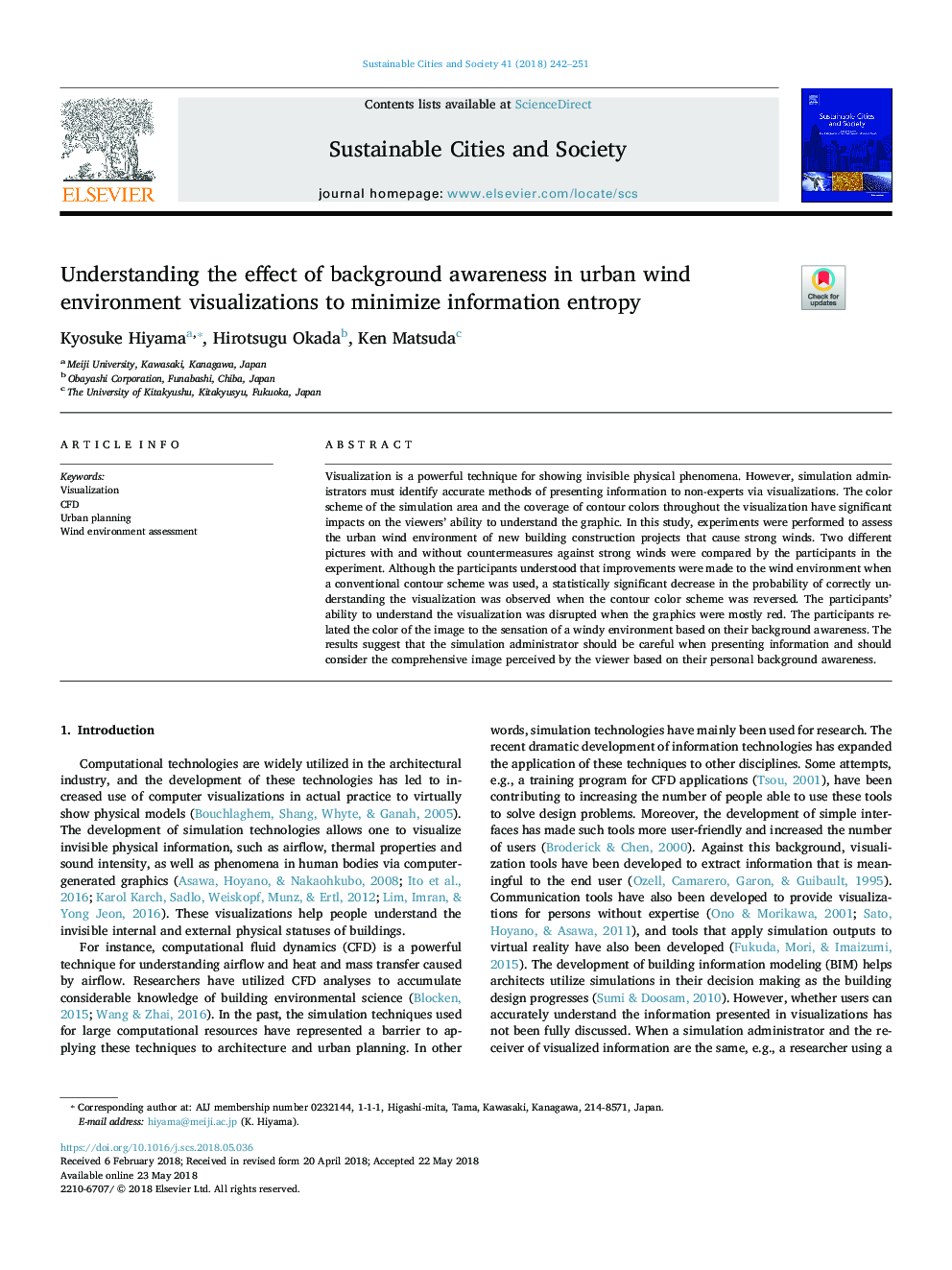| Article ID | Journal | Published Year | Pages | File Type |
|---|---|---|---|---|
| 6774971 | Sustainable Cities and Society | 2018 | 10 Pages |
Abstract
Visualization is a powerful technique for showing invisible physical phenomena. However, simulation administrators must identify accurate methods of presenting information to non-experts via visualizations. The color scheme of the simulation area and the coverage of contour colors throughout the visualization have significant impacts on the viewers' ability to understand the graphic. In this study, experiments were performed to assess the urban wind environment of new building construction projects that cause strong winds. Two different pictures with and without countermeasures against strong winds were compared by the participants in the experiment. Although the participants understood that improvements were made to the wind environment when a conventional contour scheme was used, a statistically significant decrease in the probability of correctly understanding the visualization was observed when the contour color scheme was reversed. The participants' ability to understand the visualization was disrupted when the graphics were mostly red. The participants related the color of the image to the sensation of a windy environment based on their background awareness. The results suggest that the simulation administrator should be careful when presenting information and should consider the comprehensive image perceived by the viewer based on their personal background awareness.
Keywords
Related Topics
Physical Sciences and Engineering
Energy
Renewable Energy, Sustainability and the Environment
Authors
Kyosuke Hiyama, Hirotsugu Okada, Ken Matsuda,
